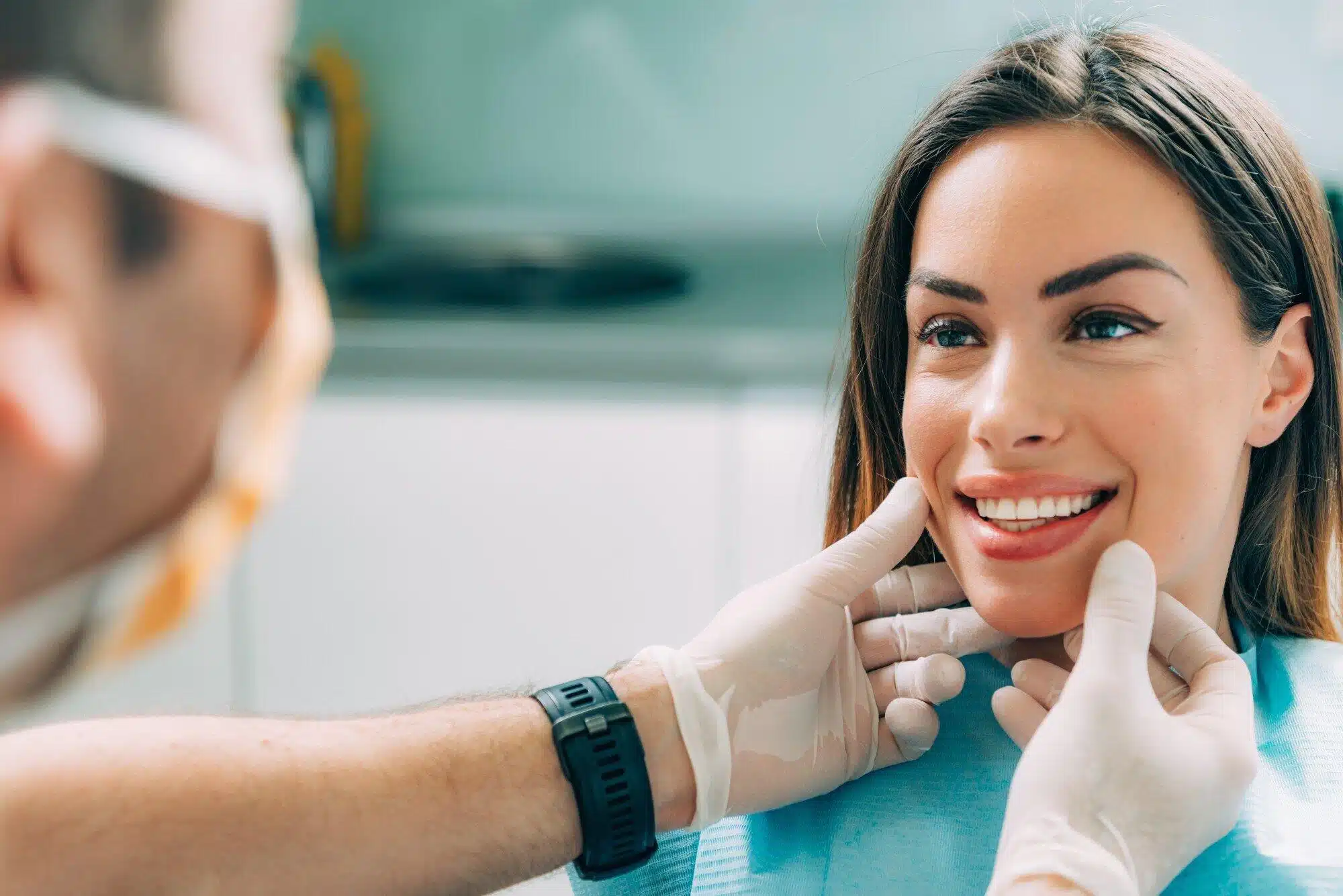Beauty
Recovery Timeline: What to Expect After a Hair Transplant

Table of Contents
A hair transplant can be a life-changing experience, offering the opportunity to restore a full head of hair and boost self-confidence. Understanding the recovery timeline is crucial for managing expectations and achieving the best results for a hair transplant. This article will walk you through what to expect after a hair transplant in Sydney, ensuring you are well-prepared for each recovery phase. It’s important to highlight that Sydney’s thriving medical and cosmetic industry and its global reputation for excellence make it a sought-after destination for individuals seeking top-notch hair transplant procedures and comprehensive post-operative care.
Immediate Post-Op Care
The immediate hours and days following a hair transplant in Sydney are vital for ensuring a successful recovery. Right after the procedure, you’ll be closely monitored by the medical team to assess your condition and ensure that everything goes smoothly. You’ll typically wear a bandage or cap over the treated areas to protect the newly transplanted grafts and minimise the risk of infection. This protective covering shields the grafts and provides gentle support to the scalp.
You may experience discomfort, swelling, and redness around the recipient and donor areas during this stage. These are common and expected side effects of the procedure. Your surgeon will prescribe appropriate medications to manage pain and discomfort effectively. Additionally, cold compresses can be applied to the forehead or eyes to help reduce swelling. Collectively, these measures contribute to a smoother transition from surgery to the early recovery phase.
The First Week: Early Recovery
In the first week following your hair transplant, you’ll navigate the early stages of recovery. Discomfort, swelling, and redness around the recipient and donor areas may persist but should gradually improve. Managing these symptoms is essential for a comfortable recovery experience. Your surgeon will provide specific guidelines for cleaning and caring for your scalp during this period.
You’ll be instructed to use mild, non-medicated shampoo and lukewarm water to clean your scalp. Gentle massaging and rinsing techniques are recommended to maintain the cleanliness of the treated areas without causing undue irritation. Adhering to these instructions ensures that your scalp remains hygienic and supports healing without compromising the grafts’ integrity.
Shedding Phase: Weeks 2-4
Between weeks 2 and 4 post-transplant, you may notice a phase known as “shedding” or “shock loss.” This is a natural occurrence and shouldn’t be a cause for alarm. During this phase, the newly transplanted hairs may fall out. However, the grafts themselves remain intact beneath the surface of the skin. This shedding is part of the hair’s natural growth cycle; new hairs will eventually emerge from the follicles.
This period can be a test of patience, as the appearance of shedding may seem counterproductive. However, it’s essential to remember that this phase is temporary, and regrowth will follow. During this phase, your surgeon will guide you when it’s appropriate to resume your regular hair care routines, such as shampooing and styling.
Months 2-3: Early Growth
Around months 2 to 3 post-transplant, you’ll witness the first signs of early hair growth. The newly emerging hairs are typically fine and thin at this stage. This early growth indicates that the grafts successfully establish themselves in their new environment. However, it’s essential to remain patient, as it can take several more months for the transplanted hair to thicken and mature.
During this phase, your surgeon may recommend topical treatments or medications to support hair growth and enhance the overall quality of the transplanted hair. These treatments play a role in nurturing the developing follicles and ensuring a robust outcome.
Months 4-6: Visible Progress
By months 4 to 6, you should experience more significant progress in the appearance of your transplanted hair. The hair will continue to thicken, and the overall density will improve. At this stage, the transplanted hair will start to look more natural, and you may feel more confident about your appearance.
This phase marks a turning point in your recovery journey as the results become increasingly evident. It’s a rewarding period when you can start to appreciate the transformation that has taken place since the initial surgery.
Months 7-9: Continued Improvement
In the months 7 to 9 post-transplant, the trajectory of improvement in hair density and overall appearance continues. The transplanted hair will continue to grow, and you will have a clearer idea of the outcome. Regular follow-up appointments with your surgeon are essential during this time to assess your progress and make any necessary adjustments to your care plan.
This phase is significant because it bridges the earlier stages of recovery and the final results. Continued care and maintenance are essential during this period to ensure that the transplanted hair matures optimally.
Months 10-12: Final Results
Around months 10 to 12, you can expect to see the final results of your hair transplant in Sydney. The transplanted hair will have fully matured, and you should enjoy a natural and fuller head of hair. This marks the culmination of your recovery journey and the realisation of your hair restoration goals.
At this stage, you can fully appreciate the impact of the procedure on your appearance and self-esteem. The final results represent a rewarding outcome, and you can confidently embrace your rejuvenated look.
Long-Term Care and Maintenance
While the first year post-transplant is critical, long-term care and maintenance are equally vital for preserving the results of your hair transplant in Sydney. Your surgeon will guide how to maintain your new hair and may recommend ongoing treatments or medications to support continued growth and density.
These long-term care measures are tailored to your needs and designed to ensure your transplanted hair remains healthy and vibrant. By following your surgeon’s recommendations and maintaining a dedicated hair care routine, you can enjoy the lasting benefits of your hair transplant and embrace the confidence that comes with a revitalised appearance.
Conclusion
In conclusion, the recovery timeline after a hair transplant is a multi-stage journey, each phase serving a crucial purpose in achieving the desired outcome. From immediate post-operative care to shedding, early growth, visible progress, and the final results, each stage transforms your hair and appearance. By adhering to your surgeon’s guidance and remaining patient and committed throughout the recovery process, you can enjoy the confidence and satisfaction of a successful hair transplant.
Beauty
Via Max – Sense TZE Active Gel Estimation: A Comprehensive Guide

Table of Contents
Skincare is an essential part of maintaining healthy, youthful-looking skin, and using the right products can make all the difference. One such product gaining popularity is the Via Max – Sense TZE Active Gel Estimation, designed to provide intense hydration, healing, and anti-aging benefits. This article explores everything you need to know about this gel, from its features and benefits to its application and value.
Product Overview
The Via Max – Sense TZE Active Gel Estimation is a lightweight, non-greasy product that addresses various skin concerns. It combines effective natural and scientifically proven ingredients to nourish, heal, and rejuvenate the skin.
- Main Features:
- Hydrates and locks in moisture.
- Soothes and repairs irritated skin.
- Boosts collagen for firmer, youthful skin.
- Suitable for all skin types, including sensitive skin.
- Key Ingredients:
- Aloe Vera: Known for its soothing properties, Aloe Vera reduces redness and calms inflammation.
- Tea Tree Oil: Helps combat acne with its antibacterial and antifungal properties.
- Hyaluronic Acid: A powerful humectant that retains moisture, leaving skin plump and hydrated.
- Vitamin E: Protects against environmental damage and supports skin repair.
Benefits of Using Via Max – Sense TZE Active Gel Estimation
- Deep Hydration:
- Keeps skin moisturized throughout the day.
- Prevents dryness and flakiness, especially in colder months.
- Healing Properties:
- Aids in soothing irritated skin caused by environmental factors or skin conditions.
- Reduces redness and inflammation.
- Anti-Aging Effects:
- Promotes collagen production, which helps reduce fine lines and wrinkles.
- Restores skin elasticity for a youthful appearance.
- Enhanced Skin Texture:
- Smoothens rough patches and evens out skin tone.
- Leaves skin feeling soft and supple.
Usage Instructions
To achieve the best results, follow these steps:
- Cleanse:
- Start with a clean face to remove dirt and oil.
- Apply Gel:
- Take a small amount (pea-sized) and spread evenly across your face and neck.
- Massage:
- Gently massage until fully absorbed.
- Frequency:
- Use twice daily, preferably in the morning and evening.
Precautions:
- Avoid direct contact with eyes.
- Conduct a patch test on a small area of skin before full use, especially if you have sensitive skin.
Product Estimation
- Cost Analysis:
- The gel typically comes in a 50ml container and is competitively priced compared to similar products.
- The price reflects its premium ingredients and proven benefits.
- Value for Money:
- The long-lasting effects make it a cost-effective option.
- A little goes a long way, as only a small amount is needed per application.
- Availability:
- The product is readily available online through platforms like Amazon and select retail stores.
Customer Reviews and Feedback
- Positive Reviews:
- Many users have praised its lightweight formula, noting how quickly it absorbs without leaving a greasy residue.
- Users report visible improvements in hydration and reduction of fine lines after consistent use.
- Concerns:
- Some users found it less effective for severe skin conditions like eczema or rosacea.
- A few mentioned the price as slightly higher than budget-friendly alternatives.
Scientific Backing
- Aloe Vera: Proven to reduce skin inflammation and irritation.
- Tea Tree Oil: Supported by studies for its antimicrobial properties, beneficial for acne-prone skin.
- Hyaluronic Acid: Widely recognized for its ability to hold water up to 1,000 times its weight.
- Vitamin E: Known for its antioxidant effects, protecting skin cells from oxidative damage.
These ingredients work synergistically to deliver optimal skincare results.
Comparison with Other Products
When compared to similar products, Via Max – Sense TZE Active Gel Estimation stands out due to its unique combination of ingredients that address multiple skin concerns. While some competitors may focus solely on hydration or anti-aging, this gel delivers both, along with healing properties.
Final Thoughts and Recommendations
The Via Max – Sense TZE Active Gel Estimation is a versatile skincare product suitable for individuals looking to improve hydration, reduce signs of aging, and enhance skin texture. Its lightweight, non-greasy formula makes it ideal for daily use, regardless of skin type.
Call to Action
If you’re seeking an all-in-one solution for your skincare routine, consider adding the Via Max – Sense TZE Active Gel Estimation to your lineup. You can purchase it online or from trusted retailers. For optimal results, maintain a consistent skincare routine and consult a dermatologist if you have specific concerns. Your skin deserves the best care!
Article Recommendations
8882381346: Dealing with Spam and Scam Calls
816-608-8691 Contact Details and Usage Guide
All You Need to Know About DMC001881: The Versatile Lug Nut Cover
Beauty
4 Ingredients to Look for in an Effective Eye Lifting Serum

Table of Contents
Do you often find yourself gazing at your reflection, wishing those fine lines and sagging skin around your eyes would just vanish?
An effective eye lifting serum might be just what you need. In the quest for youthful, vibrant eyes, knowing which ingredients can make a real difference is crucial.
This article dives into the top four components that your serum should have to give you the lift and radiance you’re longing for. Get ready to unlock the secret to the bright, alert eyes you remember.
1. Retinol
Retinol is a key ingredient in skincare, especially for the eye area. It helps by speeding up the skin’s renewal process. This means it can help reduce the appearance of fine lines and wrinkles around the eyes.
Adding retinol to your skincare routine can make a big difference. It works by encouraging the production of new skin cells. Regular use can lead to smoother, more youthful-looking skin around the eyes.
If you’re looking to address signs of aging effectively, consider the best retinol eye cream and treatments. The best can give you assurance of visible results within a few weeks or months. It can also help with dark circles and pigmentation issues.
3. Peptides
Peptides are small chains of amino acids that tell your body to produce more collagen. Collagen is important for keeping skin firm and elastic. Using anti-aging eye serums with peptides can help your skin look firmer and reduce sagging around the eyes.
When looking for an eye serum, make sure it has peptides in the ingredients list. These molecules support your skin’s structure and can help lessen the look of wrinkles. With regular use, an eye serum with peptides can help your eye area appear more lifted and refreshed.
3. Hyaluronic Acid
Hyaluronic acid is a powerful moisturizer found naturally in the skin. It helps to keep the skin hydrated by holding onto water molecules. This hydration is vital for maintaining the plump and smooth appearance of the skin around the eyes.
With age, our skin’s natural ability to produce hyaluronic acid decreases. Adding an eye serum with hyaluronic acid can help replenish this loss. The result is more hydrated, and less wrinkled skin around the eyes, giving a refreshed and youthful look.
4. Antioxidants
Antioxidants are substances that protect your skin from damage caused by harmful molecules called free radicals. These free radicals can damage skin cells, making skin look older. Applying an eye serum with antioxidants can help guard the skin around your eyes from this damage.
Using eye serum with antioxidants can also support the skin’s natural repair process. This can lead to healthier, stronger skin around the eyes. Over time, the use of such a serum can contribute to a more youthful and vibrant appearance of the eye area.
Elevate Your Gaze With a Potent Eye Lifting Serum
Choosing the right eye lifting serum can transform the skin around your eyes, making you look and feel more youthful. By selecting a serum with ingredients like retinol, hyaluronic acid, peptides, and antioxidants, you’re not just caring for your skin-you’re investing in it.
Remember, consistency is key. Regular use of your chosen eye lifting serum can lead to visible changes and more vibrant-looking eyes. Get ready to see the world with a fresh, uplifted gaze.
Beauty
Smile Makeovers: How General and Cosmetic Dentistry Can Boost Your Confidence

Table of Contents
Hey there! Ever thought about how a dazzling smile can totally flip the script on your day? Yup, we’re talking about the magic wand of confidence – a Smile Makeover! It’s all about mixing a little bit of this and a little bit of that from the world of dentistry to give your grin that sparkle. And guess what? It’s not just about looking good; it’s about feeling fantastic too.
From regular check-ups to some wow-worthy cosmetic updates, getting that dream smile can really turn up the dial on your self-esteem. Ready to shine brighter? Stick around to find out how your smile can go from “meh” to “wow” with a little general and cosmetic dentistry fairy dust!
Teeth Whitening
Teeth Whitening is a popular part of general and cosmetic dentistry. It makes your teeth white and bright. You go to a dentist and they use special stuff to make your teeth look great. It doesn’t hurt and makes a big difference in your smile.
This is good for anyone who wants their smile to be its brightest. It’s a simple way to look and feel better. Teeth whitening is a quick and easy way to improve your appearance and boost your confidence. Plus, it’s completely safe for your teeth! Talk to your dentist about the best treatment options for you.
Dental Veneers
Dental Veneers are thin covers that your private dentist puts on your teeth. They make your teeth look nice and even. If you have a tooth that looks different or you don’t like how it looks, veneers can help. Your dentist will help pick the right shape and color.
They stick them on your teeth so they look perfect. This is a cool way to make your smile look amazing. If you want your teeth to look their best, ask your private dentist about veneers. It’s a fast way to get a pretty smile.
Orthodontic Treatment
Orthodontic Treatment is when you get your teeth straight. The dentist uses braces or clear stuff called aligners. This makes your teeth go where they should. If your teeth are not straight or if they bite weirdly, this helps.
It can take a while, but it’s worth it. Your teeth look great after. You will have a nice smile. This treatment is good for both kids and grown-ups. If you want your teeth nice and straight, talk to your dentist about Orthodontic Treatment. Your teeth will thank you before and after it’s done!
Dental Implants
Dental Implants are like fake teeth that look real. If you lost a tooth, this is a great way to fill that gap. A dentist puts a metal thing in your jaw and then adds a tooth on top.
It feels and looks like your own tooth. You can eat and smile like normal. It’s a bit of work, but it lasts a long time. If you’re missing teeth, talk to your dentist about Dental Implants. It’s a way to make your smile complete again.
Regular Check-Ups
Regular Check-Ups are super important for keeping your teeth healthy. When you go to the dentist often, they can catch problems early. This means you can fix small issues before they get big. During a check-up, the dentist looks at all your teeth and checks your gums to make sure everything is okay.
They also clean your teeth to remove any tartar or plaque that builds up. This helps in preventing cavities and gum disease. Plus, your dentist can give you tips on how to take care of your teeth at home. Regular check-ups help keep your smile bright and healthy. Don’t forget to visit your dentist every six months or as they recommend!
Invisalign Braces
Invisalign Braces are a cool way to straighten your teeth without those metal cosmetic braces. They are clear and people barely see them. It’s like wearing nothing but your teeth get straight. You can take them out when you eat or brush your teeth. That’s pretty handy. People of all ages can use them.
If you want a straight smile without metal braces, talk about Invisalign treatment in Lexington, Kentucky with your dentist. They will tell you if it’s right for you. It’s a neat way to get your teeth looking great. So, don’t be shy – ask your dentist about Invisalign braces and start your journey towards a perfect smile!
Teeth Bonding
Teeth Bonding is a quick fix for fixing small problems with your teeth. It’s when a dentist puts a special material on your teeth to make them look better. This material is the same color as your teeth, so it looks natural.
You can use it for chipped teeth, spaces between your teeth, or if one tooth is not the same color as the others. The dentist shapes the material to look like part of your tooth. It doesn’t take long, and you walk out with a nicer smile. Teeth Bonding is an easy and affordable way to make your teeth look nice.
Dental Crowns
Dental Crowns are like hats for your teeth. If your tooth is broken, weak, or doesn’t look good, a crown can cover it up. The dentist makes a crown that looks just like a real tooth and puts it over your bad tooth.
It protects the tooth underneath and makes it stronger. Crowns can be made of different stuff, like metal or ceramic, so they look nice and work well. If you have a tooth that needs help, a crown might be the answer.
Gum Contouring
Gum Contouring is a way to fix your gum line. If your gums cover too much of your teeth or look uneven, this can help. A dentist uses special tools to shape your gums so your smile looks better.
It’s not scary and can make a big difference in how your smile looks. If you think your gums are too high or too low, talk to your dentist about Gum Contouring. It’s a quick way to make your smile prettier.
Learn More About General and Cosmetic Dentistry
General and cosmetic dentistry can make big changes in how your smile looks and how you feel about yourself. Whether you need a little fix or a big change, there’s lots of stuff dentists can do to help. You can whiten your teeth, fix their shape, or get them all straight and pretty. And if you have bigger problems, like missing teeth or gums that don’t look right, they can fix that too.
Visit our blog for more!
-

 Travel4 years ago
Travel4 years agoThe Family of Kirk Passmore Issues a Statement Regarding the Missing Surfer
-

 Technology4 months ago
Technology4 months agoManyroon: The Key to Unlocking Future-Proof Business Solutions
-

 Cryptocurrency1 year ago
Cryptocurrency1 year agoBest Tips For Cryptopronetwork com Contact 2024
-

 Technology3 years ago
Technology3 years agoPaturnpiketollbyplate Login & Account Complete Guide Paturnpike.com
-

 Apps & Software2 years ago
Apps & Software2 years agoFapello 2023: Social Media Platform for NSFW Content
-

 Law3 years ago
Law3 years agoShould I Hire a Lawyer For My Elmiron Case?
-

 Business4 months ago
Business4 months agoCoyyn.com Gig Economy: Smart Contracts and Fair Payments for Freelancers
-

 Business4 months ago
Business4 months agoAcumen: The Key to Smart Decision-Making and Success






